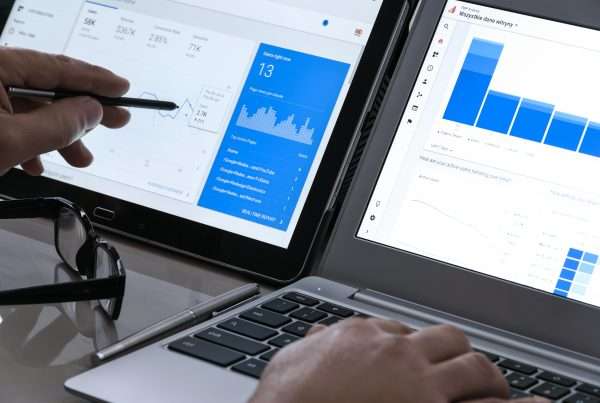Running a Pay Per Click (PPC) campaign for your business can have a large impact on your bottom line. Set up correctly, you can establish consistent ROI and grow your business. Many advertisers excitedly jump into PPC without a plan, adjusting campaigns as they go; Google makes it very easy to set up a campaign and start showing ads. As a group of paid search nerds, we are as thrilled as you are, to watch your traffic skyrocket with paid aids, but it can be dangerous to jump into PPC without a carefully crafted plan.
Don’t let your success be a surprise; through PPC campaign optimization, take the time to craft and plan a PPC campaign that is designed for success by getting the best return on your investment. With a properly structured PPC campaign, you will be sure to target your audience with the right message and more importantly, at the right time… when they are ready to buy.
Structuring your PPC campaign the right way will yield more traffic and conversions in the most efficient manner possible. Use this checklist to set up your PPC campaign for the best possible ROI.

How to Run a PPC Campaign
Whether you’re a PPC novice or a pro, use this PPC campaign optimization checklist to create a smart strategy that aligns with your business goals.
1. Perform an Internal Audit
The first thing any responsible advertiser needs to do is audit themselves before running a PPC campaign. An audit is a comprehensive overview of your brand’s online presence.
Why audit yourself first? It’s simple: this is your chance to clean up your digital presence and to understand what you’re doing well and what areas need improvement.
Audit and improve your social media presence, website, email templates, and any other place where your brand can be found. This can improve your conversion rates before you spend any money on PPC. Think of auditing as troubleshooting.
You want to make sure that if you are going to spend a lot of money on sending traffic to your site, that you have set up the best possible user experience so you have the highest probability for converting those users.
2. Put Time and Effort into Research and Creating Goals
Use research and your existing data such as site analytics, customer feedback, and industry trends to determine the best direction for your PPC campaign.
Once you have a general direction for your campaign, set goals. Remember to design SMART goals that you can measure after your campaign. This will make it much easier to determine what was successful and what needs to be adjusted in the future. Remember to align these goals with your company’s business.
3. Produce a Competitor Analysis
Because PPC is an auction-based platform, the bidding on the cost per click (CPC) can increase dramatically. This happens especially if you are competing against aggressive advertisers who are consistently increasing their bids. Because your competitors have a direct effect on keywords and bids, potentially increasing your cost, it is important to know how competitive your search terms are.

This competitor analysis, using tools like SpyFu, will provide you with a lens into how you stack up against your competitors. Identify low hanging fruit with a competitor analysis that keeps you ahead of the pack.
4. Build a Tree Structure
What are ALL the different veins and arteries with which people can find your business? Taking the time to identify all these unique categories will help you manage the account once it is up and running and also provide a superior return while running more efficiently. We call this stage the Tree Structure and we spend a full week solely surfacing all of the categories (and subcategories) that people can find our client’s businesses.
This is a very time consuming process and can be challenging depending on the complexity or nuances of your business. We mentioned earlier that Google makes it very easy to set up a Google Ads account and here at Logical Media Group, we subscribe to a philosophy that if it is difficult to do, then we should be doing it because the competition likely won’t.
5. Perform Keyword Research
Us nerds call keyword research the fun part but this could be the most time-consuming portion building a successful PPC campaign. Using a combination of your audience analysis, goals, and competitor analysis, brainstorm a list of keywords. The right keywords will be the difference between amazing results and outright failure.

A majority of PPC accounts look to the 80/20 rule, meaning 20% of the keywords in the account spend 80% of the budget, and also comprise 80% of the return. If you do not build out every category, you may end up not ever finding your 20%.
Once you’ve brainstormed keywords, use a tool to refine them. Ideally you want keywords with a high search volume and low competition or CPC. Remember to have a mix of long and short tail keywords to stay competitive. Here’s a quick guide from Google for keywords in PPC campaigns.
6. Define Ad Groups
Once you have your well-researched keyword list, it’s time to sort them into ad groups. Ad groups let you create hyper-targeted advertisements for higher engagement. You can also create customized landing pages for each segment of your audience. Get granular here: more relevant ads mean better-quality clicks!
7. Create Landing Pages and Ads
The best landing page is a specific landing page. Address audience pain points in the copy and highlight how your solution answers all of their problems.
You want to use target keywords in the landing page copy, but don’t be spammy about it. Avoid keyword stuffing and, instead, deliver content that’s valuable to your audience. When in doubt, you want to design for speed with landing pages. A one-second delay in load time means an 11% loss in page views. That’s a recipe for lost conversions and wasted ad spend.
Writing PPC ad copy is all about experimenting and seeing what’s best for your audience. Remember to include all essential components of the ad like the headline, brief text, and display URL. When you’re wondering how to run a PPC campaign, it’s important to make your unique selling proposition clear in the copy. Don’t forget to include ad extensions if they make sense for your campaign. Check out this Google resource to choose the right ad extensions.
8. Track It!
Always implement tracking on your PPC campaigns. It takes a few extra steps, but it’s worth the work. Integrate PPC tracking with other platforms, like Google Analytics, to get a 360-degree view of your customer journey.
The Bottom Line for PPC Campaign Optimization
PPC has so many possibilities for marketers. Unfortunately, so many people make critical missteps while setting up their PPC campaigns, spending more money and time on things that just don’t work. Use this checklist to set up rockstar PPC ads that your audience can’t turn down.
Are you feeling overwhelmed by the idea of PPC? Don’t fret! Give Logical Media Group a ring to do all the heavy lifting for you.








